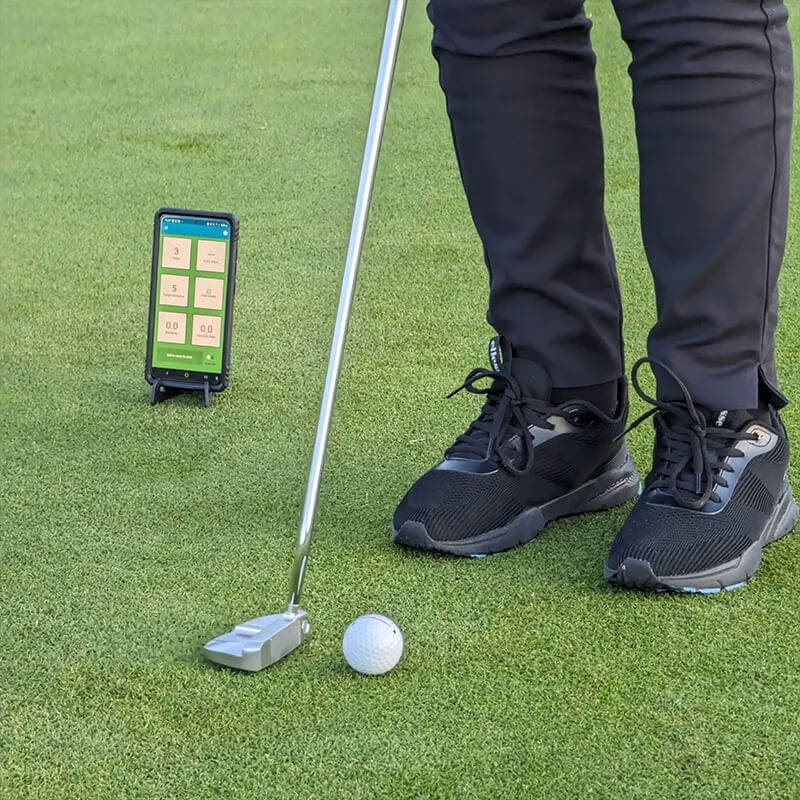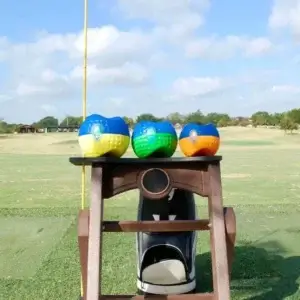
Golf Advice: How to Read a Green Like a Pro
For golf enthusiasts and hobbyists, reading greens might not come as naturally to them as it does to a professional golfer. However, the premise of reading a putting green is straightforward when you break it down.
Being able to decipher slopes, breaks, and subtle undulations accurately and instinctively is what separates a pro golfer from the rest of the pack. While some experienced golfers have an innate ability to visualise and predict putts and take strokes of their game with relative ease, green reading is a learnable skill that can be honed with the right techniques.
Putting is a part of a golfer’s game when it’s easy to make mistakes but as is the case, practice makes perfect, and reading a green can help you prevent making those same errors in abundance.
Being able to read greens like a top golfer may seem challenging at first, but with these actionable tips, you’ll be draining putts like a tour pro in no time.
Understand the Surroundings
The first step to reading greens like a pro is developing an eye for subtle contours and slopes.
Pay close attention to the overall shape of the green and its topography. Are there any noticeable tiers or plateaus? What’s the general slope direction? Observe if certain areas are higher or lower than others.
Also look for more subtle valley lines, ridges and backstops that could influence your putt. The way the grass grows can also indicate breaks, so note any visible grain direction. Additionally, pay attention to closely mown areas around the green, known as the “fringe.” The transition up to the longer fringe grass can often stop balls from continuing too far past the hole.
Read Your Putt from Both Sides
Once you have a feel for the overall green topography, your next step is to read your specific putt from both sides of the hole. This gives you two different visual perspectives of the break.
As you look down the line back to your ball from either side, visualise how the ball will travel that path.
Use the slopes and contours you identified earlier to imagine the curve and descent your putt will take towards the hole. If you can get an aligned duo of reads, you can feel confident knowing that your putt will be strong. If they’re drastically different, you may need to step back and reassess.
Trust Your Eyes, Not Your Memory
A common mistake amateur golfers make is trying to memorise every green for putts that they make later. It’s important to remember that your memory can distort or oversimplify the true contours from time to time.
Instead, even if it’s your second or third putt on the same green, re-read it from behind the hole again. Don’t make assumptions – let your eyes rediscover the proper line.
The best players trust what their eyes see in the moment rather than what they think they remember.
Choose an Intermediate Target
Picking an intermediate point or spot along your intended line is another trick the pros use. Instead of focusing solely on the hole, select a target in front of you that aligns with the visualised break point and descent of the putt. This could be a discoloured patch of grass, aeration hole, ball mark or another distinctive spot in front of you. Using a short-term target will help you align and start the putt online as well as provide feedback on distance control.
Read Partner’s Putts for a Second Opinion
When playing with others, make sure to watch and read your partner’s putts as they roll by. Observe if their ball travels the path and speed, you expected based on your read.
This external “second opinion” provides validation that your eyes are accurately identifying the correct line and break. If their putt behaves unexpectedly, it’s a sign you may need to double-check your reads. Always trust your final judgement primarily, though.
Utilise Golf Training Aids at Home
Supplementing your golf course practice with at-home training aids can be an excellent way to sharpen your overall feel for green reading.
You can make effective use of the following when refining your green reading skills:
- Putting mats – Practice using a confined, realistic green mat. Variable break controls let you dial in slope difficulty and test your skills in different conditions.
- Putting gates – These will improve your consistency to start the ball in your desired line, allowing you to refine face alignment and eye position.
- Putting lasers – These allow you to trace your putting lines up and down all the way to the hole without the need for a backboard. It attaches to a back stand for easy assembly.
- Golf simulators – Golf simulation studios offer comprehensive metrics and training data on all parts of your game including highly realistic simulated putting greens. With bespoke projection screens and quality fabrics available for golf mats, you won’t find a more immersive and ideal setup for practising golf at home.
With the right techniques and consistent training, your ability to read greens like a seasoned pro will drastically improve before long.
For more tips and professional advice on perfecting your short and long games, explore Golf Swing System’s extensive range of high-performance golf simulation systems and training aids.
Investing in your own premium home golf simulator allows for unlimited opportunities to ingrain excellent green reading skills through realistic, repetitive practice. Whether you are exploring the options of retrofitting a simulation system into one of your home’s rooms or considering investing in a purpose-built golf simulation garden studio, we can help.
Contact us today to discuss your needs and bring your putting to the next level.











